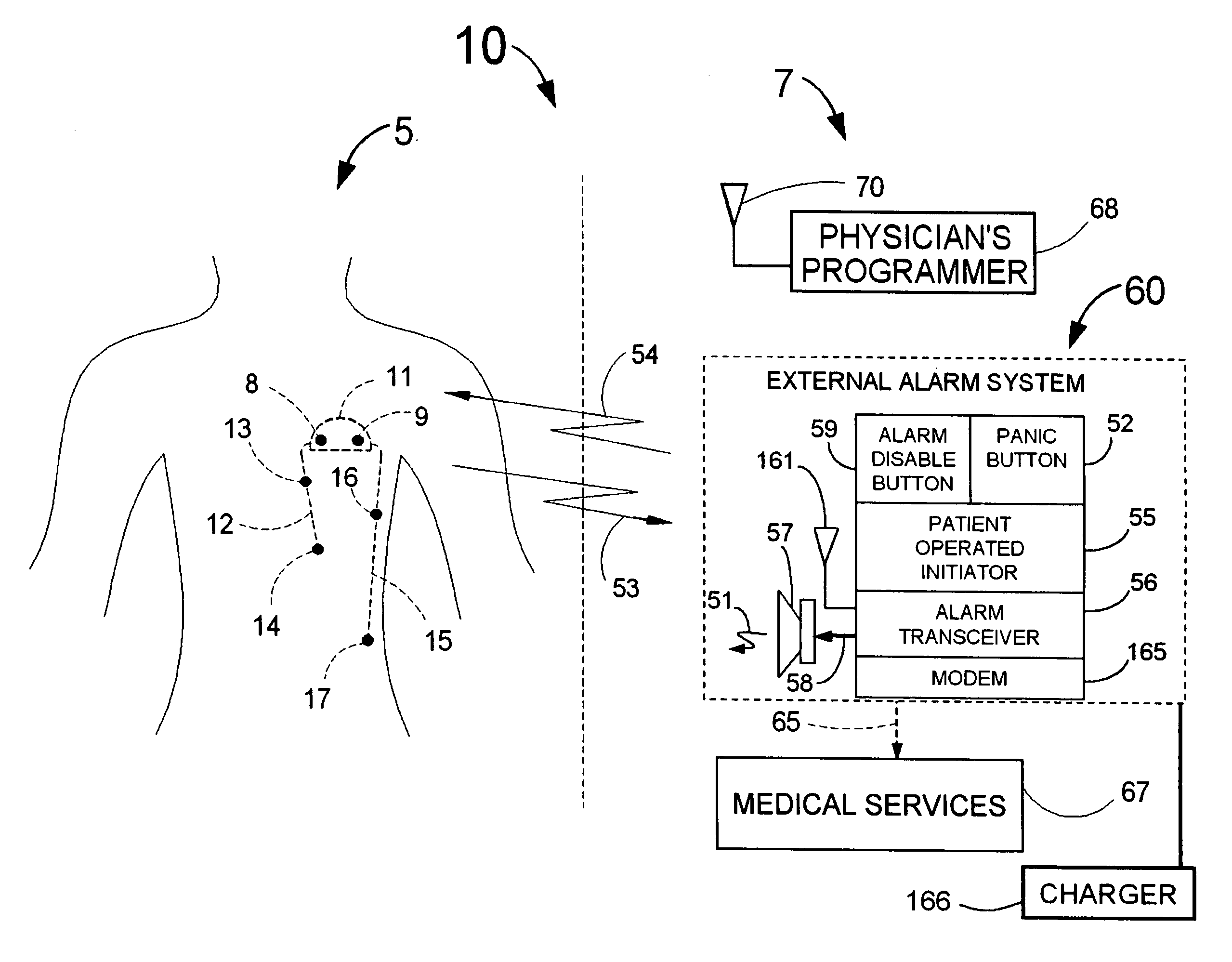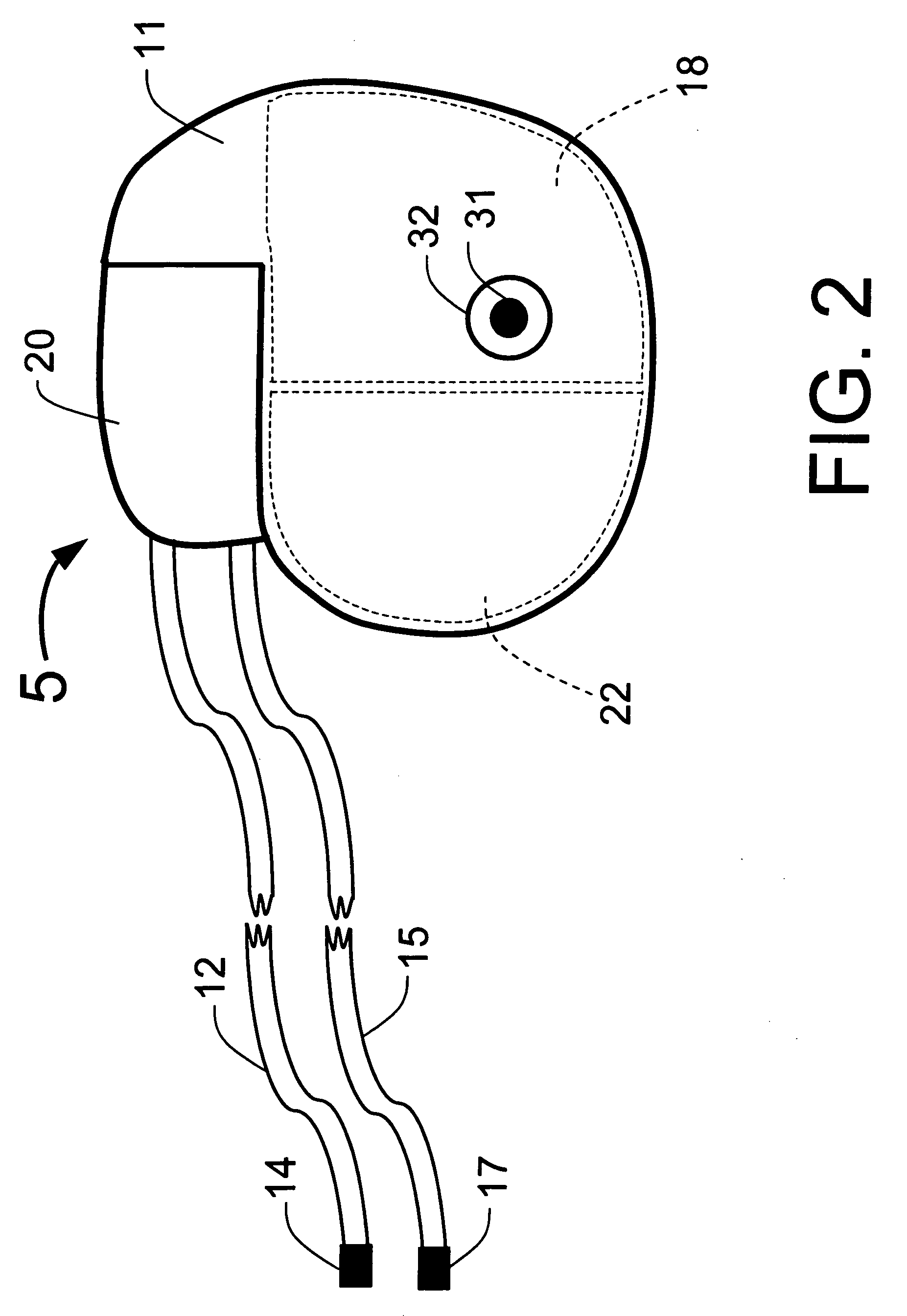Cardiac event detection over varying time scale
- Summary
- Abstract
- Description
- Claims
- Application Information
AI Technical Summary
Benefits of technology
Problems solved by technology
Method used
Image
Examples
Embodiment Construction
[0110]FIG. 1 illustrates an example of a tracker system 10 including an implanted cardiotracker 5 and external equipment 7. The cardiotracker 5 includes electrical wire leads 12 and 15 and a battery-powered electronics module contained within a metal case 11. The cardiotracker 5 can track the patient's cardiovascular condition over extended periods of time. The cardiotracker 5 can also detect acute cardiac events including acute myocardial infarction and arrhythmias and warn the patient when such an event occurs. The cardiotracker 5 can also track slowly changing cardiac functions such as day-to-day changes in QRS voltage that can be indicative of the rejection of a transplanted heart. The cardiotracker 5 can record the patient's electrogram signal for later review by a medical practitioner. The cardiotracker 5 can capture histogram-based historical representations of one or more heart signal parameters for later analysis and review by a medical practitioner. The cardiotracker 5 can...
PUM
 Login to View More
Login to View More Abstract
Description
Claims
Application Information
 Login to View More
Login to View More - R&D
- Intellectual Property
- Life Sciences
- Materials
- Tech Scout
- Unparalleled Data Quality
- Higher Quality Content
- 60% Fewer Hallucinations
Browse by: Latest US Patents, China's latest patents, Technical Efficacy Thesaurus, Application Domain, Technology Topic, Popular Technical Reports.
© 2025 PatSnap. All rights reserved.Legal|Privacy policy|Modern Slavery Act Transparency Statement|Sitemap|About US| Contact US: help@patsnap.com



